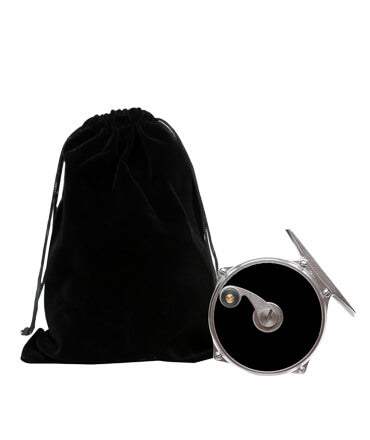Fly Line Dynamics: The Best Floating Fly Fishing Line Explained
When it comes to fly fishing, the type of line I choose can significantly impact my success on the water. Floating fly lines are often the best option for beginners and seasoned anglers alike, allowing for greater versatility in various fishing conditions. Understanding the differences between floating and sinking lines is crucial for targeting specific species and enhancing my overall fishing experience.

In my experience, a good floating fly fishing line is essential for dry fly presentations and when I want to fish on the surface. It stays buoyant, making it easier to track my fly and enticing fish to strike. I have found that the best floating fly lines strike a balance between casting performance and durability, ensuring that my time on the water is both productive and enjoyable.
Choosing the right line can be overwhelming with so many options available. By exploring the advantages and specific applications of floating vs. sinking lines, I can make informed decisions that maximize my fishing potential. Whether I’m targeting trout in a quiet stream or searching for bass in still waters, understanding these fundamentals will enhance my fly fishing adventures.
Fundamentals of Fly Lines
In fly fishing, understanding the different types of fly lines and their specific applications is crucial. This knowledge directly impacts casting technique and overall fishing success.
Fly Line Types and Purposes
There are various types of fly lines designed for specific fishing conditions. The floating line is the most common, providing versatility in calm waters. It stays on the surface, ideal for dry flies.
Sinking lines are designed to submerge, making them suitable for deeper water fishing. They allow access to fish that are not near the surface. Intermediate lines fall into a middle category, sinking slowly and useful for fishing at a precise depth.
Additionally, I find that sink-tip lines combine both floating and sinking properties. The front part sinks, while the rest stays above water. This hybrid nature aids in targeting varying water depths effectively.
Understanding Line Weight and Tapers
Line weight is fundamental in fly fishing. The weight-forward (WF) taper allows for easier casting over long distances. This front-heavy design helps load the rod more efficiently.
Double taper (DT) lines have the same weight throughout, enabling delicate presentations. They are excellent for short casts and technical scenarios.
Familiarity with the AFTM (Association of Fishing Tackle Manufacturers) system helps in choosing appropriate line weights, which range from 1 to 14. Matching line weight to the rod and reel ensures optimal performance.
Fly Line Materials and Construction
Fly lines are crafted from various materials, predominantly PVC, which affects their performance and durability. The coating impacts how well the line floats or sinks.
Construction methods vary, but most lines consist of a core and an outer layer. The core provides strength, while the outer layer offers abrasion resistance.
Tapers in fly lines—like weight-forward or double taper—influence casting dynamics and accuracy. Manufacturers often produce shooting heads for specialized applications. These head sections allow for dynamic casting techniques in specific fishing scenarios. Understanding these materials and constructions can enhance my fishing experience significantly.
Floating vs. Sinking Fly Lines
When choosing between floating and sinking fly lines, understanding their functions and applications is essential. Each type serves specific fishing situations and techniques that affect your success on the water.
Pros and Cons of Floating Fly Lines
Pros:
- Versatility: Floating fly lines are ideal for a variety of techniques, including using dry flies and nymphing.
- Easy Retrieval: They allow for easy line management and retrieval, making casting and re-casting straightforward.
- Surface Presentation: This line helps achieve a natural presentation for fish feeding on the surface.
Cons:
- Limited Depth: They can't effectively reach fish that are deeper in the water column.
- Wind Resistance: They can be more affected by wind, causing challenges in certain conditions.
When to Use Sinking and Sink-Tip Lines
Sinking lines are best suited for deep water situations where fish are holding beneath the surface. These lines quickly get your flies down to desired depths, which is crucial when targeting fish species that prefer submerged structures.
Sink-tip lines combine both floating and sinking properties, making them versatile. I use them when I want to fish near the surface while still reaching subsurface levels, especially for streamer fishing or when nymphing in a river current.
Selecting the Right Line for Fishing Conditions
Choosing the right line depends on water conditions and target species. For instance:
- Floating Lines: Best for calm waters or when using dry flies.
- Sinking Lines: Ideal for deep lakes or rivers where fish are less active on the surface.
- Sink-Tip Lines: Great when fishing in currents or varying depths.
In situations where I’m using streamers or fishing nymphs, I often opt for sinking or sink-tip lines. Factors like water clarity, speed, and temperature also influence my choice, ensuring I optimize my chances of catching fish.
Essential Fly Line Gear and Setup
Understanding the essential components and setup for fly fishing is crucial for an effective experience. The right gear and proper maintenance can significantly impact my success on the water.
Components of a Fly Fishing Rig
A well-equipped fly fishing rig consists of several key components. I start with a fly rod, which should be matched to the type of fish I’m targeting and the casting techniques I plan to use.
Next is the fly reel, which holds the backing and fly line. The reel should provide a smooth drag system for minimizing fish break-offs.
Backing is important as it connects to the reel and provides extra line when a fish makes a strong run. The leader is attached to the fly line and tapers down for better presentation. Finally, the tippet further connects the leader to the fly and comes in various strengths for different applications.
Matching Fly Line to Rod and Reel
It's essential that my fly line matches the specifications of both the rod and reel. Each rod is rated based on a specific line weight, which determines its casting performance.
I ensure that the floating fly line corresponds with the rod’s weight for optimal rod load during casting. Using a line that’s too heavy or light can hinder my casting abilities and reduce the effectiveness of my setup.
I also consider the reel’s drag system while selecting my line. A smooth drag setup allows for better control when fighting fish, making it easier to adjust tension as needed.
Fly Line Maintenance and Care
Proper maintenance of my fly line can extend its lifespan and maintain performance. I regularly check for nicks or abrasions that could affect its integrity.
Cleaning the line is essential; I use a line cleaner and cloth to remove dirt and debris after each fishing trip. It's also wise to store the line properly by winding it neatly on the reel to prevent tangles and memory issues.
I pay attention to the durability of the line, especially when exposed to UV light or extreme conditions. Ensuring my gear is in good condition helps me focus more on casting and less on gear failure.
Advanced Fly Line Considerations

In advanced fly fishing, understanding casting techniques and species-specific line choices is crucial for success. These considerations enhance my ability to adapt to various fishing conditions and target specific species effectively.
Techniques for Casting and Line Control
When it comes to casting, line control is vital for accuracy. I focus on my rod load, ensuring I maintain a smooth backcast before making a forward cast. This technique helps generate the necessary energy to deliver the fly precisely where I want it.
Mending is another essential technique. I often use it to adjust my line’s position on the water. By raising my rod tip and moving my line upstream, I can reduce drag on my nymphs or dry flies. This subtle adjustment significantly improves my catch rate.
Practicing different casting angles and styles prepares me for various situations. Whether using streamers for larger fish like striped bass or delicate presentations for trout, adaptability in casting ensures I can respond to changing conditions effectively.
Targeting Specific Species with Line Choice
Choosing the right line for the species I’m targeting is essential. For instance, when pursuing trout, I often use floating lines with tapered leaders for better presentation of dry flies. This combination facilitates a natural drift, increasing my chances of hooking a fish.
When targeting species like striped bass, I might opt for a sinking line. The ability to get my fly down quickly can be advantageous, as bass often hunt deeper in the water column. Streamers are my go-to here, drawing attention from potential catches below the surface.
For nymphing, a floating line is still applicable, but I pay close attention to weight. Adding split shot helps to sink my nymphs effectively, allowing them to reach the depth where fish are feeding. Selection of line and fly type directly impacts my success when targeting different species.











